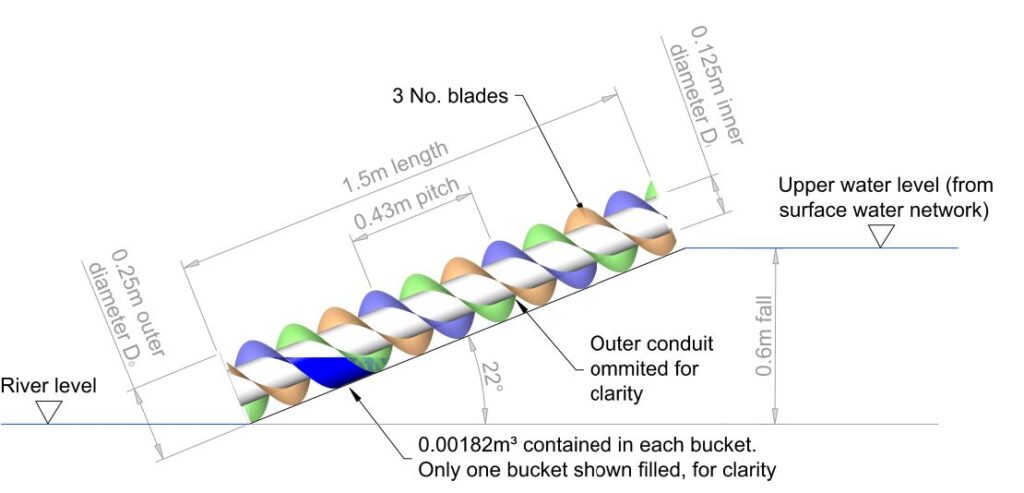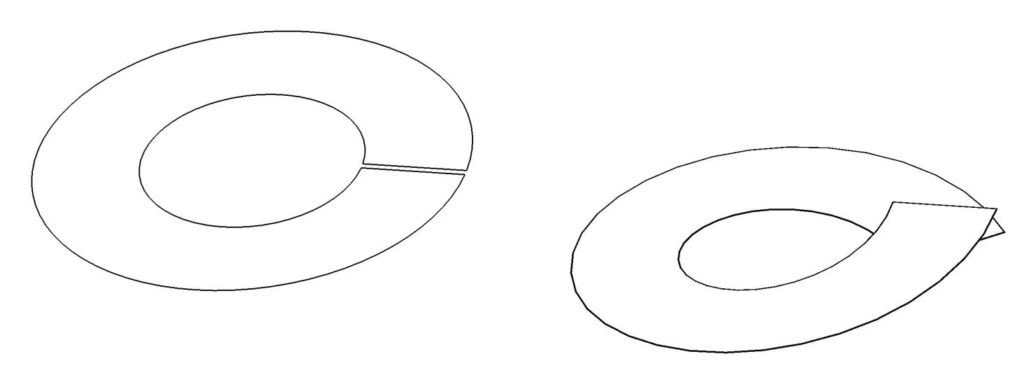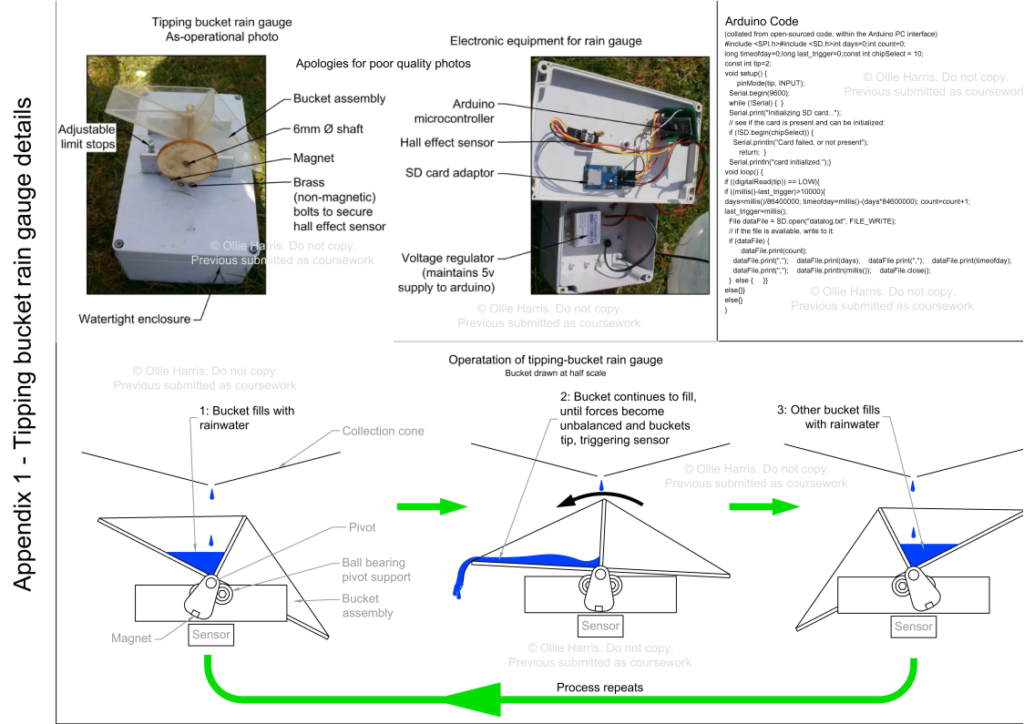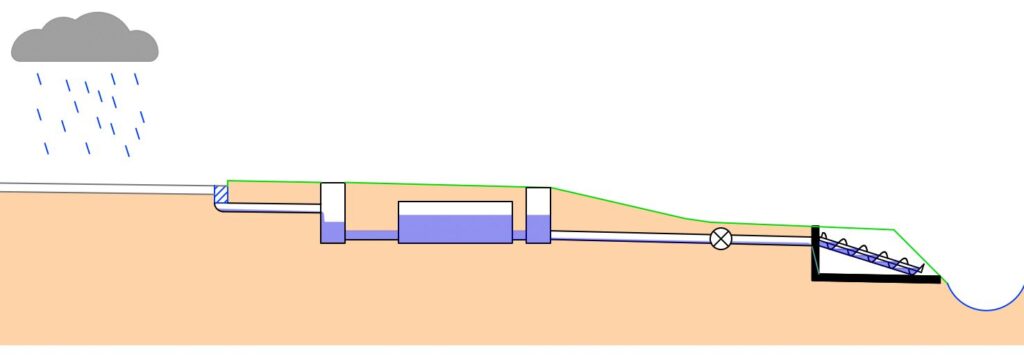This page describes my project at University, where I researched practical applications of a pico-scale archimedes screw turbine. Yes I’m aware of the juxtaposition : a page about green energy, alongside “smelly 2 stroke motorcycles”, (and the irony which comes with it.)
This page is still under construction, as I don’t have access to any good of my good photos or files.
When I had to select a project for my Degree, I was stumped on what to do.
Often my uni would prefer people to research concrete, for example what can be added to make concrete stronger, reduce cement usage etc. However that did not interest me at all. I think it would be fair to say, albeit a bit corny, that I’ve always had an interest in hydroelectic generation. So what did interest me was making a hydroelectric generator of some description. Realistically I don’t have the funds or time to do something like optimise a fancy turbine, so I wanted to come up with an innovative way to create energy, in an otherwise untested scenario
My work at a smaller engineering consultancy gave me great exposure to many aspects of civil engineering, not least drainage design. Looking at the flow rates, of say, an outfall into a river, it struck me that large volumes of water, at often high flow rates were potentially “going to waste”.
I wanted to research how to tap into that potentially wasted energy source. Long story short, it’s not worth it, or at least not from a car park!
I selected an example site, where I knew how the drainage worked. Basically it was a car park that drained all of its surface water into a river. It was only a small car park, but I was hoping there would be at least some useful energy.

I didn’t set a particularly high bar either – I wanted to prove that the surface water could generate enough to keep a parking meter topped up. Bear in mind this is often done with a solar panel, less than the size of an A4 sheet of paper!
I think, from memory, it was an 8ah battery I wanted to keep up. This is about double the capacity of a mobile phone, so not a lot!
The site topography made an Archimedes screw turbine the only really viable option, with minimal elevation drop / head.
Plus I wanted to make a screw turbine anyway, after seeing such an installation many times, on train trips past Radyr, near Cardiff, Wales.
The size of the screw was always going to be a limitation. A large screw costs a lot in materials, weighs a lot. Plus, I knew from the beginning there wouldn’t be a huge amount of consistent flow
In an uncharacteristically practical decision, it was decided to go for a 250mm diameter screw. Why? Well, that was a size of drainage pipe that I could easily obtain – ie 10”
A few research documents exist where they’ve already done the maths to find the optimum dimensions, such as screw pitch, inner diameter etc. So that provided excellent data and valuable marks in the Uni dissertation. A local green energy consultant has an excellent website, which gave the rest of the info.
In fact the numbers worked well – it turns out, of 125mm diameter exhaust pipe was ideal for the inner core.

So, with all the diameters set, I had to think about creating the actual blades. Basically these are just a disc of steel plate, about 0.8mm thick, with a radial slit cut from the centre, perpendicularly to the circumference. That allowed the blades to be formed into a spiral section.

Naturally, the inner and outer dimensions are larger than that of the inner core and outer conduit, because the blades are on an inclined plane. To get it right, I made plastic templates, before cutting steel. After a lot of trial and error, I had a suitable diameter and a set of discs.
Each of these steel discs were then spot-welded together, to form a long spiral. This was stretched out, and spot-welded to the inner core.
I welded up a steel frame, to support the outer conduit and the screw, supported on ball bearings at each end. The outer diameter was then ground down until the screw turned smoothly – a long and tedious task!
But, I had a turning screw , a plan on how to test it, all that was left was to weld on the generator (an ond treadmill motor) bracket and attach a chain drive.
At this point, the uni announced I would not be allowed to make the turbine. This was during covid lockdowns, so the workshops at uni were closed. No issue – I have access to all the kit, and had already ¾ built the thing! So I had to comply and leave the turbine unfinished and untested. I am on a work placement currently, but after that, the number 1 project is to finish the Archimedes screw turbine. Just so I can tick off another project – it won’t produce power reliably or for a long time due to the unpainted finish, open bearings and most importantly the diminutive size of the thing!
So at that point, I was stumped. I had put a lot of time and money into a lump of metal in a tube. I had to revert to a 100% theoretical dissertation, which I really didn’t want to.
I moved onto the theory, and calculated various things
- Theoretical power. That was with the help from a website of a hydroelectric specialist in Gloucestershire.
- Leakage flow (past the blades), and estimating a suitable clearance between the blades and outer conduit.
- An idea of how the buoyancy of the inner tube may bend the screw and increase the blade gap and leakage flow (hint, it doesn’t, not really)
I wanted to calculate the amount of water leaving the site, but the rainfall data is virtually impossible to decipher or access, for free anyway. With no rainfall data, or details of how often the outfall pipe will flow, and at what rate, I had no confidence in my report, so I decided to go back to the practical side
For this, I made a rainfall sensor, which can be seen on this photo. I’ll do a proper page on this, one day

That allowed me to come up with outfall data, for a few months only.
Putting the outfall rates into my earlier calculations found that the screw was utterly useless. Rainfall, despite what people say, isn’t that frequent. There were times where the screw would be running flat-out during storms, granted, but that wasn’t enough to charge the battery. Then you’d have long periods of dry, or possibly the odd bit of drizzle etc which would give about a watt for 15 minutes.
Claiming that an outfall could be attenuated, and released to give longer generation times, was enough to justify the screw does have a useful function after all. And, in this scenario, the battery would’ve charged.

In truth, the investigation was a bit of a failure, or at least the concept in its current form.
That said, I think my calcs for the generated power were very conservative, and I still wish to finish the screw. I cannot believe such a large object can only produce about 50W peak. A more reliable water source would be a surefire way to justify the screw turbine. And once you start to look, the UK is dotted with low flow, low head streams, weirs and outfalls. I now can’t walk past a stream without thinking “damn, that needs a dam”. So it’s certainly a project to finish.
Still, I got a good grade in the report. However, I wont be going into mass production quite yet!
© Ollie Harris 2020 – 2023
Please note, all of the above has been submitted as a university coursework piece. Any copying of the above, for your own uni work, will likely flag up as plagiarism upon submission. Quote, and references to my work is of course fine, but offered on a solely educational and non-commercial basis.
I waited until after graduation to write this up, to avoid any potential such issues (ie getting caught and docked marks because I “copied” from my own website!)